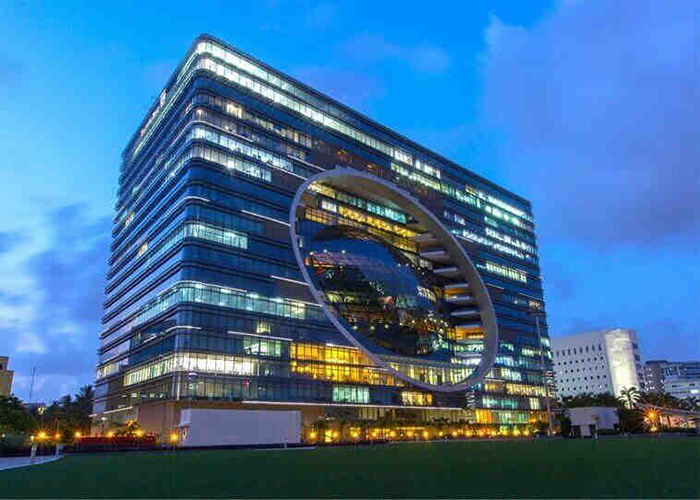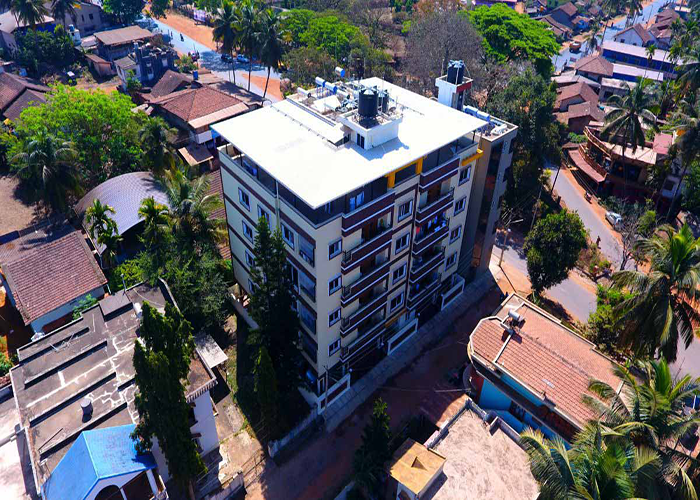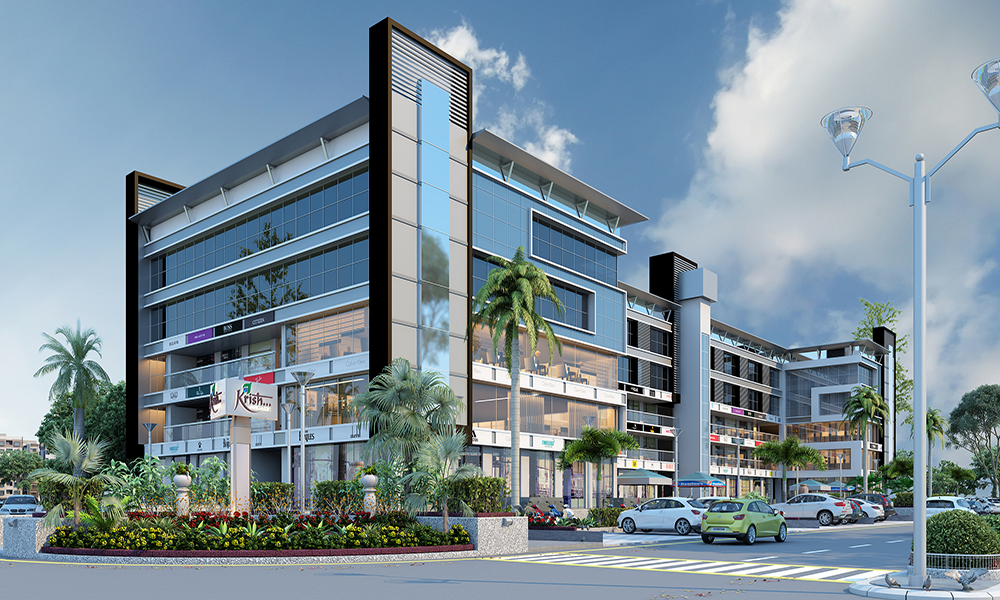Efficient Water and Wastewater Management in Commercial Complexes Using STP, ETP, WTP, WWTP, RO, and Other Solutions

Commercial complexes have become the backbone of urban infrastructure in India, especially in Maharashtra's rapidly growing cities. Malls, office towers, multiplexes, and retail hubs now form a significant part of Mumbai, Pune, Nagpur, and Nashik cityscapes. These spaces cater to thousands of visitors and employees daily, placing immense demand on utilities like electricity and water.
In Maharashtra, where real estate and commercial investment are booming, these complexes are built to offer comfort, convenience, and efficiency. However, alongside their economic importance, they also contribute to environmental stress. One of the major concerns is water usage and the corresponding wastewater output. Commercial spaces are among the high water consumers per square foot, with multiple food courts, restrooms, HVAC systems, and cleaning activities. Hence, addressing the water lifecycle—right from intake to treatment and discharge—is crucial for their sustainable operation and environmental compliance.
Understanding Water Consumption in Commercial Complexes for Daily Activities and Operational Infrastructure Needs
Commercial complexes require significant volumes of water every day. This includes water for public restrooms, food courts, HVAC systems, fire safety sprinklers, and facility cleaning. Water is also used for pantry services and employee sanitation in office spaces. The need escalates in retail and entertainment zones due to increased footfall, especially on weekends and holidays.
Complexes often use water for exterior glass cleaning, landscape irrigation, and basement maintenance to maintain hygiene and smooth operations. Centralized air conditioning systems also rely heavily on water-based cooling towers. A consistent water supply is vital with fluctuating visitor volumes and extended operational hours. Many buildings depend on a mix of municipal supply, tankers, and borewells to meet demand. However, with water scarcity becoming a recurring issue in urban areas, recycling and efficient reuse through treatment systems have become essential to sustainable commercial infrastructure management.
Everyday Activities in Commercial Buildings That Result in Consistent and Diverse Wastewater Generation
Daily operations in commercial complexes generate various wastewater streams. Public restrooms used by staff and visitors produce large volumes of blackwater. Food courts and restaurants contribute significantly by discharging grease-laden water containing organic waste, soap, and detergents. Pantries and cleaning services within office zones also add to the greywater load.
"In the dynamic environment of commercial complexes, water powers every activity—from comfort to cleanliness. Managing this precious resource responsibly means using it wisely and treating and reusing every drop. A sustainable water strategy in commercial hubs is an investment in future-ready business infrastructure and urban environmental health."
Cleaning floors, facades, and parking areas regularly involves water mixed with chemicals and dirt. Cooling towers in HVAC systems generate blowdown water with a high concentration of dissolved solids. Backwash from water filtration systems and overflow from storage tanks add to the wastewater volume. Collectively, these sources demand a robust water management approach. The wastewater can pollute drainage systems without proper treatment and even affect groundwater. Thus, identifying these sources helps design effective and targeted treatment systems that ensure compliance with environmental norms and safe reuse wherever possible.
Types of Wastewater Emerging from Various Commercial Activities Within Complexes and Their Characteristics
The wastewater from commercial complexes is typically classified into greywater and blackwater. Greywater arises from sinks, pantries, floor cleaning, and HVAC operations. It contains detergents, oils, and chemical residues but is less contaminated than blackwater. Blackwater, discharged from toilets and urinals, carries human waste and pathogens and requires more intensive biological treatment.
Apart from these, there are specific wastewater types, such as kitchen effluent from food courts, which contain fats, oils, and greases (FOG) and cleaning effluent with disinfectants and industrial cleaning agents. Cooling tower blowdown water contains a high concentration of salts and anti-scaling chemicals. These can corrode plumbing systems or contaminate natural water bodies if not treated correctly. Therefore, understanding wastewater composition is vital before choosing the right treatment solution. Proper segregation and customized treatment systems ensure safe disposal or potential reuse, reducing environmental risk and operating costs.
Treatment Methods Adopted by Commercial Complexes to Safely Manage and Reuse Wastewater Efficiently
Commercial complexes typically install Sewage Treatment Plants (STPs) to manage their blackwater and greywater loads. These STPs begin with preliminary screening to remove solids, followed by sedimentation tanks to separate sludge. Advanced biological processes like SBR (Sequential Batch Reactor) or MBBR (Moving Bed Biofilm Reactor) break down organic contaminants.
Post-biological treatment and disinfection through UV or chlorine ensures pathogens are eliminated, making the water fit for reuse in flushing, landscaping, or HVAC applications. Complexes with food outlets may also include Grease Trap Units or Effluent Treatment Plants (ETPs) to handle oil-rich kitchen wastewater. Cooling tower blowdown is treated using filtration and chemical balancing before reusing or safely discharging. Regular maintenance, automation, and quality monitoring are crucial for system efficiency. Proper treatment reduces water procurement costs and minimizes environmental impact, making it an essential part of any large commercial facility's operations.
How Commercial Complexes Adopt Modern Technology to Recycle and Reuse Water Within Their Operations
Modern commercial complexes are leveraging advanced technologies to manage and reuse wastewater efficiently. Compact STP units with MBR (Membrane Bioreactor), SBR, and MBBR technologies are popular for their high treatment efficiency in small footprints. These systems are often integrated with automation panels that control flow, dosing, and pH in real time.
Grease interceptors and ETPs equipped with oil skimmers treat heavy kitchen waste in food court areas. Filtration technologies like RO (Reverse Osmosis) and multi-grade sand filters purify treated water for HVAC or flushing purposes. Some buildings even integrate rainwater harvesting with treatment systems, creating a closed-loop water management model. IoT sensors and cloud-based dashboards allow facility managers to monitor performance remotely, flagging issues before they escalate. This ensures regulatory compliance and helps commercial entities build green certifications such as IGBC or LEED, enhancing operational sustainability and brand value.
How We Offer Customized Water Treatment Solutions for Commercial Complexes of Every Size and Design
We provide end-to-end water and wastewater treatment solutions specifically designed for commercial complexes. Whether your project involves a mall, IT park, business center, or multi-use facility, we assess your water usage, wastewater discharge, and space constraints to recommend the best-fit treatment system. Our services include supplying and installing STPs, ETPs, WTPs, RO plants, and grease traps.
Our STPs have low-footprint designs, odor control systems, and automation-ready controls. We also offer modular systems that are ideal for phased or vertical construction. Post-installation, we provide training, monitoring, and AMC services to ensure hassle-free operation. We strictly adhere to pollution control board norms and help clients secure necessary certifications. From design to execution and long-term support, our focus is to ensure your commercial property operates sustainably, cost-effectively, and within compliance. With our expertise, your facility stays ahead in water conservation and environmental responsibility.
Conclusion – Commercial Complex Water Treatment:

Conclusion – Commercial Complex Water Treatment:
The growing scale of commercial complexes in India and Maharashtra brings increasing responsibility toward resource management, particularly water. From daily operations to facility maintenance, these complexes rely on water for almost every function. However, the wastewater generated is equally significant and must be managed with a focus on sustainability.
Installing appropriate water and wastewater treatment systems such as STPs, ETPs, and RO units is not just about compliance but operational efficiency, environmental responsibility, and future readiness. Technologies like MBBR and IoT-enabled monitoring ensure high-quality output with minimal human intervention. At the same time, treated water reuse reduces dependence on external supply sources. By adopting integrated water treatment strategies, commercial complexes can save costs and build a strong reputation for eco-conscious operations. With our expert solutions, your commercial project can become a benchmark for water sustainability in the urban landscape.

